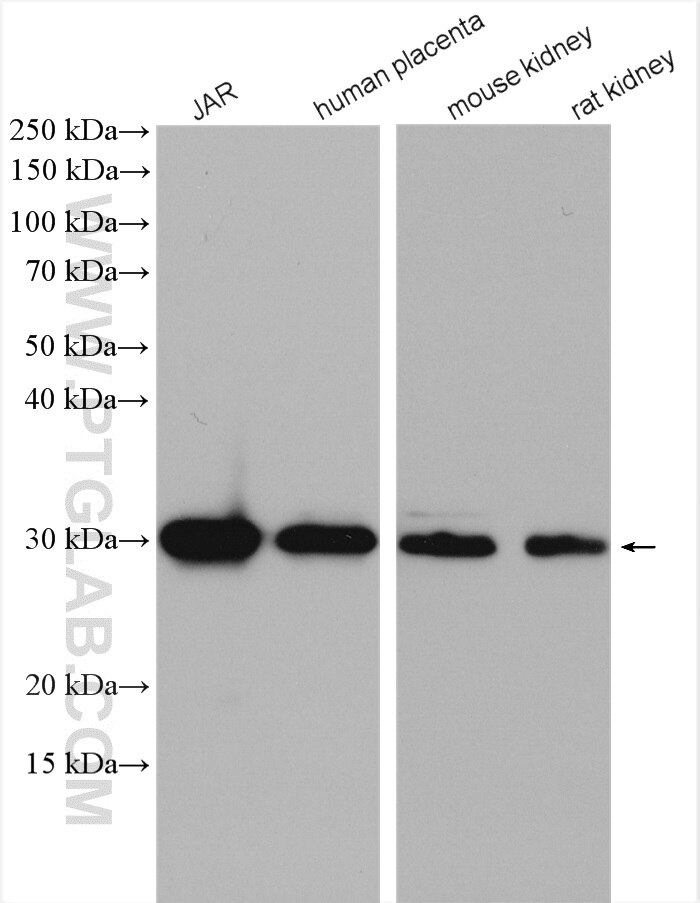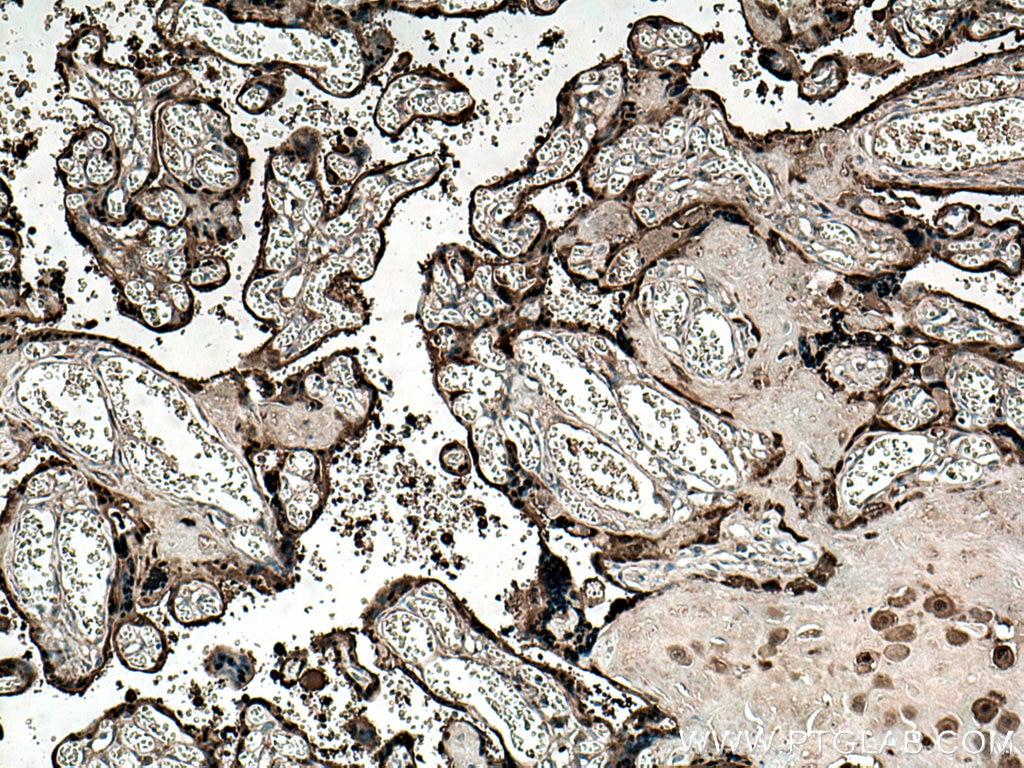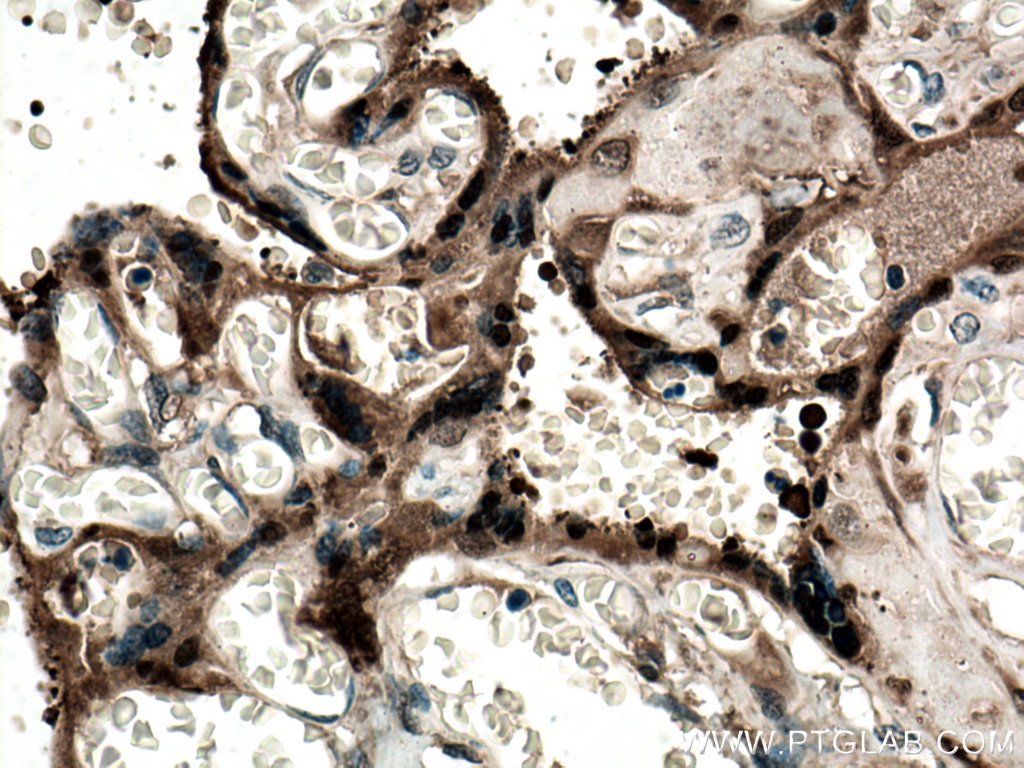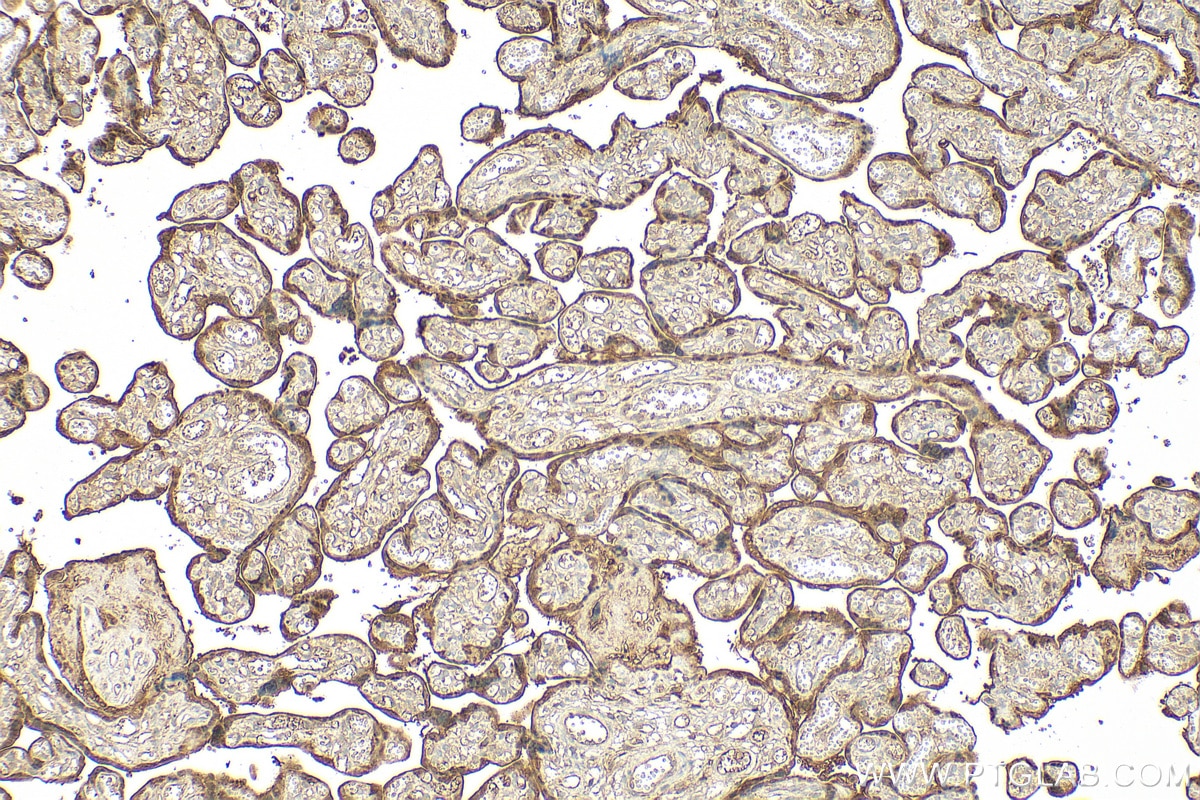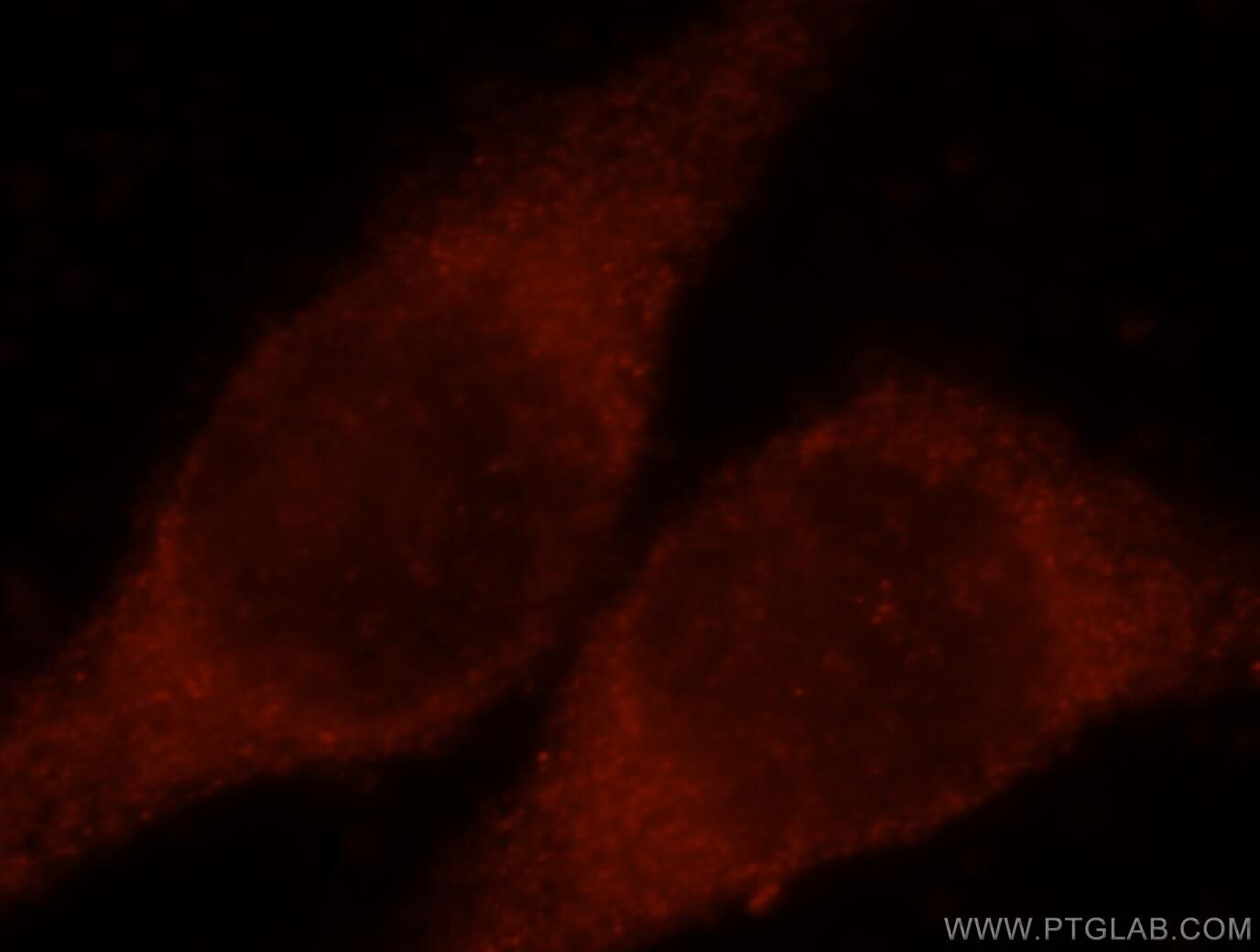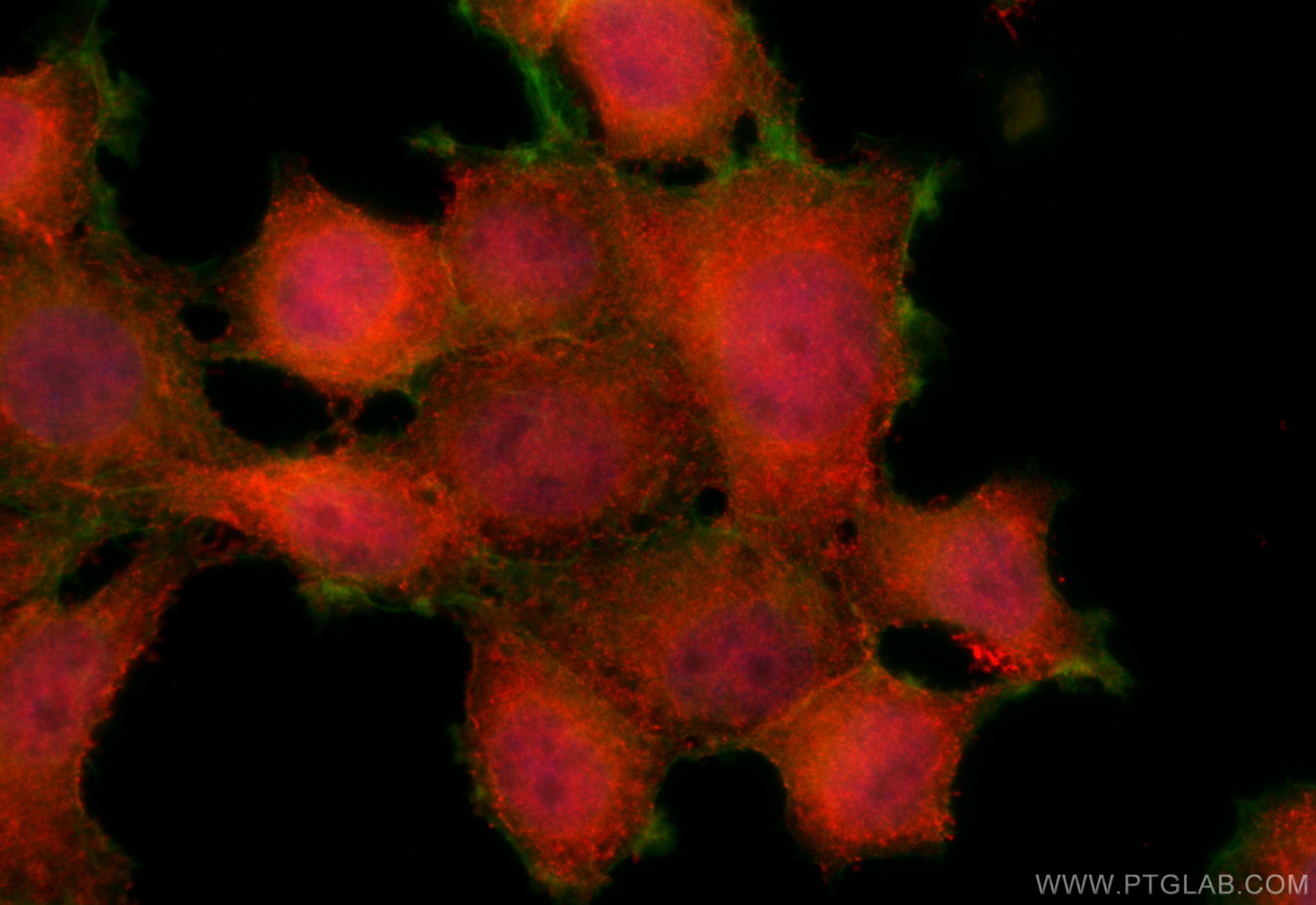Anticorps Polyclonal de lapin anti-CLIC3
CLIC3 Polyclonal Antibody for WB, IHC, IF/ICC, ELISA
Hôte / Isotype
Lapin / IgG
Réactivité testée
Humain, rat, souris
Applications
WB, IHC, IF/ICC, CoIP, ELISA
Conjugaison
Non conjugué
N° de cat : 15971-1-AP
Synonymes
Galerie de données de validation
Applications testées
| Résultats positifs en WB | cellules JAR, tissu placentaire humain, tissu rénal de rat, tissu rénal de souris |
| Résultats positifs en IHC | tissu placentaire humain, il est suggéré de démasquer l'antigène avec un tampon de TE buffer pH 9.0; (*) À défaut, 'le démasquage de l'antigène peut être 'effectué avec un tampon citrate pH 6,0. |
| Résultats positifs en IF/ICC | cellules MCF-7 |
Dilution recommandée
| Application | Dilution |
|---|---|
| Western Blot (WB) | WB : 1:1000-1:6000 |
| Immunohistochimie (IHC) | IHC : 1:50-1:500 |
| Immunofluorescence (IF)/ICC | IF/ICC : 1:10-1:100 |
| It is recommended that this reagent should be titrated in each testing system to obtain optimal results. | |
| Sample-dependent, check data in validation data gallery | |
Applications publiées
| KD/KO | See 1 publications below |
| WB | See 5 publications below |
| IHC | See 1 publications below |
| IF | See 2 publications below |
| CoIP | See 1 publications below |
Informations sur le produit
15971-1-AP cible CLIC3 dans les applications de WB, IHC, IF/ICC, CoIP, ELISA et montre une réactivité avec des échantillons Humain, rat, souris
| Réactivité | Humain, rat, souris |
| Réactivité citée | rat, Humain, souris |
| Hôte / Isotype | Lapin / IgG |
| Clonalité | Polyclonal |
| Type | Anticorps |
| Immunogène | CLIC3 Protéine recombinante Ag8757 |
| Nom complet | chloride intracellular channel 3 |
| Masse moléculaire calculée | 236 aa, 26 kDa |
| Poids moléculaire observé | 27-30 kDa |
| Numéro d’acquisition GenBank | BC007012 |
| Symbole du gène | CLIC3 |
| Identification du gène (NCBI) | 9022 |
| Conjugaison | Non conjugué |
| Forme | Liquide |
| Méthode de purification | Purification par affinité contre l'antigène |
| Tampon de stockage | PBS with 0.02% sodium azide and 50% glycerol |
| Conditions de stockage | Stocker à -20°C. Stable pendant un an après l'expédition. L'aliquotage n'est pas nécessaire pour le stockage à -20oC Les 20ul contiennent 0,1% de BSA. |
Informations générales
Chloride channels are a diverse group of proteins that regulate fundamental cellular processes including stabilization of cell membrane potential, transepithelial transport, maintenance of intracellular pH, and regulation of cell volume (PMID: 9880541). CLIC3 (chloride intracellular channel protein 3) belongs to the chloride channel CLIC family which has seven members based on sequence homology to the p64 chloride channels of bovine kidney microsomes. CLIC proteins lack the membrane-spanning domains characteristic of channel proteins and are largely intracellular. CLIC3 is predominantly localized in the nucleus and has a high expression level in placenta (PMID: 9880541; 17027078). It associates with the C-terminal of ERK7 and may participate in cellular growth control.
Protocole
| Product Specific Protocols | |
|---|---|
| WB protocol for CLIC3 antibody 15971-1-AP | Download protocol |
| IHC protocol for CLIC3 antibody 15971-1-AP | Download protocol |
| IF protocol for CLIC3 antibody 15971-1-AP | Download protocol |
| Standard Protocols | |
|---|---|
| Click here to view our Standard Protocols |
Publications
| Species | Application | Title |
|---|---|---|
PLoS One Mechanisms that determine the internal environment of the developing brain: a transcriptomic, functional and ultrastructural approach. | ||
J Cancer Analysis of Differentially Expressed Genes in a Chinese Cohort of Esophageal Squamous Cell Carcinoma. | ||
Front Cell Neurosci Identification of immune-related biomarkers in peripheral blood of schizophrenia using bioinformatic methods and machine learning algorithms | ||
Cell Death Dis CLIC3 interacts with NAT10 to inhibit N4-acetylcytidine modification of p21 mRNA and promote bladder cancer progression
| ||
Invest Ophthalmol Vis Sci Expression Distribution of Keratins in Normal and Pathological Corneas and the Regulatory Role of Krt17 on Limbal Stem Cells | ||
Biophys J Biophysical characterization of anion channels in Mitochondrion-Endoplasmic-Reticulum Contact sites (MERCs) |
